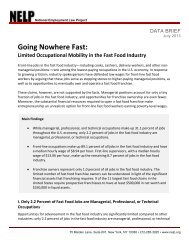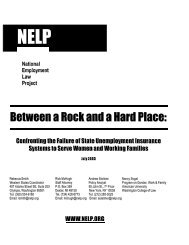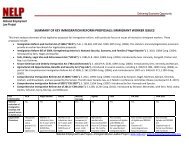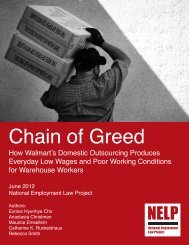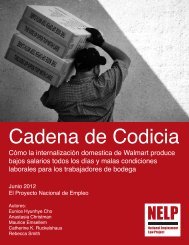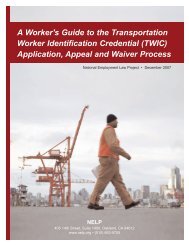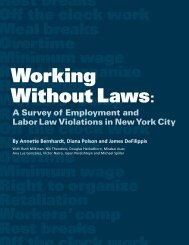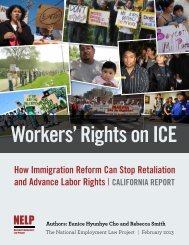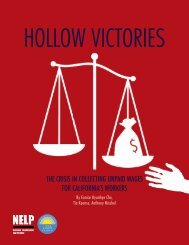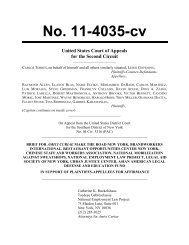Rebuilding Lives. Strengthening Communities.
Rebuilding Lives. Strengthening Communities.
Rebuilding Lives. Strengthening Communities.
Create successful ePaper yourself
Turn your PDF publications into a flip-book with our unique Google optimized e-Paper software.
Establish an information and referral source for formerly<br />
incarcerated individuals.<br />
Recommendation<br />
Issue<br />
Information about community resources can provide<br />
access to programs and a corresponding sense of direction<br />
for prisoners who are reentering society. Formerly incarcerated<br />
individuals often need guidance about services<br />
and opportunities in their communities for employment,<br />
treatment, health care, housing and various other issues.<br />
Former prisoners, specifically those who have been away<br />
from their communities for a significant period of time,<br />
may need assistance determining where services are<br />
located and how to travel to these services.<br />
It is somewhat unclear how former prisoners get their<br />
information. There does not appear to be any consistent,<br />
reliable source to guide individuals with criminal records.<br />
Word of mouth can be invaluable, but may be limited in<br />
terms of depth and breadth of information.<br />
MAYORAL POLICY CAUCUS ON PRISONER REENTRY<br />
98<br />
INSPIRATION FROM THE FIELD:<br />
THE OSBORNE ASSOCIATION<br />
IN NEW YORK<br />
The Osborne Association operates a<br />
toll-free information hotline for families of<br />
incarcerated individuals providing answers to<br />
questions about visitation, transportation,<br />
transfers, parole and other issues related to a<br />
relative’s incarceration. Former prisoners and<br />
their families volunteer to staff the hotline and<br />
provide additional information, support, and<br />
linkages to community services. For their<br />
service, the volunteers receive transportation<br />
passes, meal allowances, and small stipends. The<br />
hotline receives an estimated 200 calls a month;<br />
approximately 30 percent are repeat callers.<br />
Sources: www.osborneny.org; Eric Waters (Program Coordinator,<br />
Family Resource Center,The Osborne Association), interview with<br />
Julie Wilen, November 1, 2005.<br />
Solution<br />
The City should develop an extensive community resource<br />
mapping system to identify organizations and programs in<br />
each Chicago community that serve formerly incarcerated<br />
individuals. After this information has been compiled, the<br />
City should, then, develop mechanisms and explore<br />
different channels by which to disseminate and share this<br />
information.<br />
The City should create a “reentry resource guide”<br />
containing organizations, programs, services, contact<br />
information and transportation options for each community.<br />
Hard copies of this guide could be available in a<br />
variety of public venues (e.g., parole offices, libraries,<br />
health clinics). It could also be distributed to every prisoner<br />
through the Illinois Department of Corrections<br />
(IDOC) Pre-Start program, with each prisoner’s reentry<br />
plan and discharge summary. But this resource guide<br />
should be electronically based and accessible through the





